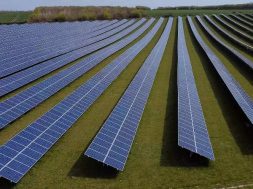
Steep import tariff won’t push domestic solar manufacture
Steep import tariffs won’t push domestic solar manufacture.
India’s efforts on solar capacity addition may position it as a leader in solar adoption, but its record on solar manufacturing shows it is barely scratching the surface on reducing solar imports. While the country added 60GW of solar generation capacity—the goal is 175GW renewable by 2022—it has added just 3GW of solar cell manufacturing, and 9GW of module manufacturing. Given how cheap Chinese imports are, in 2018, the government introduced a safeguard duty to prevent dumping. Now, as per a Business Standard report, the Ministry of New and Renewable Energy has proposed imposing a basic customs duty (BCD) of 10% on solar imports in 2021—when the safeguard duty expires. The proposal also calls for increasing the BCD to 20% in 2022, and to 30% in 2023.
Though it is true that cheaper Chinese imports, along with WTO restrictions, have hurt Indian solar manufacturers’ interest, import duties will achieve little. Rather, import duties have only hurt Indian interests. The government had imposed a safeguard duty on solar imports from China, Malaysia, and other ‘developed countries’ in July 2018 for two years. Although directorate general of foreign trade had suggested a 70% duty on imports, the government settled on a 25% duty for the first year, with a reduction to 20% for the six months after, and another cut, to 15%, for the final six months. While this was supposed to shift the focus to domestic manufacturing, a year on, all it has achieved is delaying generation targets.
Imports from China still account for 78% of India’s solar trade, and other countries, like Vietnam, Thailand, and Singapore, have become preferred destinations. Vietnam, and Thailand have witnessed an over 500% increase in exports of solar components to India in FY19 as compared to last year; the share of Singaporean solar imports has jumped from 0.73% to 5.85%. Without any significant increase in domestic capacity, the Indian solar market has slumped. Some may blame the low duty, and short time-frame for this, but higher tariffs may not aid manufacturers and only put India out of the value chain. This is evident from the fact that for the period of the safeguard duty exports have slumped 14%.
With far larger investments in infrastructure and technology upgradation happening in China, Indian solar manufacturers catching up with their Chinese counterparts seems extremely difficult. While duties may help India achieve a 9GW capacity, with each Chinese company producing 5-15GW, it still won’t be able to compete in the long run.
More important, given the paltry investment in R&D, it won’t be able to innovate. The government needs to realise that the sector needs local support in terms of infrastructure, and the MNRE is right in asking for duty exemption for products that go in solar manufacturing till 2023. If India is to achieve its 175GW target, it cannot come on the back of higher import duties, which will ultimately end up translating into higher costs.

















